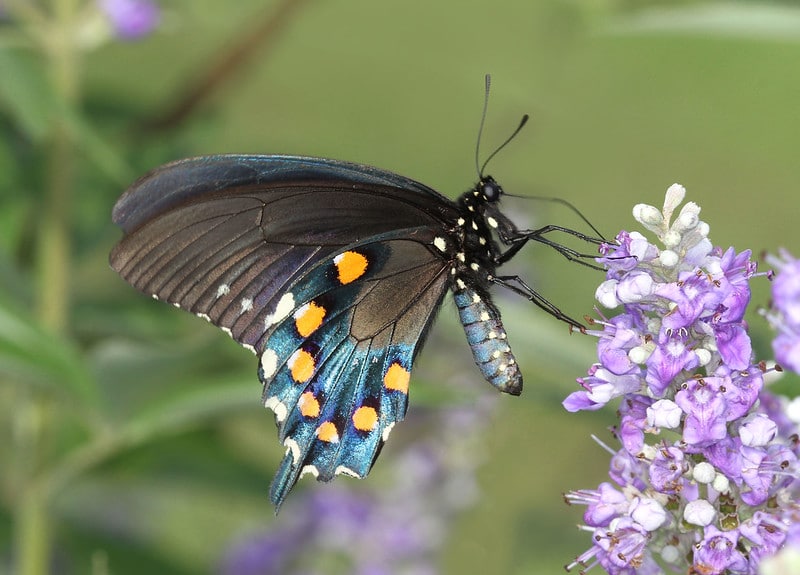
American white ibis. Evening bat. Nine-banded armadillo. Osceola turkey. These are four examples of the diverse wildlife native to the Tampa Bay-St. Petersburg area. But wildlife in Florida has been fighting a losing battle to human development, and urban growth is pushing out more wild animals. You can help by turning your yard into a mini wildlife sanctuary. You just need to give animals the food and shelter they need. Here is how to landscape for wildlife in Tampa.
Florida-Friendly Landscaping
Attracting wildlife is one of the nine principles of the Florida-friendly landscaping philosophy promoted by the University of Florida. The UF/IFAS (University of Florida/Institute of Food and Agricultural Sciences) recommends planting flowers, trees, and bushes to feed and shelter wildlife. It also suggests installing a bat house to attract any of the five species of bats that live in the Tampa area. It also helps to install birdbaths and fountains to provide birds and small mammals with a water source.
The university’s other eight tenets are:
- Right plant, right place.
- Water efficiently.
- Fertilize appropriately.
- Mulch.
- Manage yard pests responsibly.
- Recycle.
- Reduce stormwater runoff.
- Protect the waterfront.
Reduce the Amount of Lawn

A green lawn has a lot of benefits. It helps absorb stormwater runoff and keep temperatures around your home a tiny bit cooler. But that thick thatch of Zoysiagrass doesn’t do much for local wildlife in the way of food or cover. Try replacing some of your grass with groundcover plants — or just not mowing. “In general, we recommend reducing the amount of mowed lawn around your house, especially in areas of low traffic such as corners of the yard. By simply not mowing, you’ll create shelter and food for many animal species,” says wildlife ecology professor and UF/IFAS Extension specialist Mark Hostetler.
Vertical Layering

Vertical layering is a fancy name for having plants of different heights in your yard — from the grass at your feet to short plants, to bushes, on up to the biggest trees. Most landscapers in Florida use it to make yards more visually appealing. It also gives wildlife more places to hide or nest, and more options for food. Professor Hostetler recommends vertical layering your landscape as a way to recreate a natural look in your yard.
Plant Native
Plants that evolved in the Tampa area are the default setting for local wildlife. The Florida Fish and Wildlife Commission uses the popular Chinese tallow tree as an example of an unwelcome species. While hundreds of insects in China feed off of this one species, just three in the United States do. The native Southern live oak, however, provides meals to plenty of American bugs — usually without ill-effect to the tree. You want to attract those Floridian bugs to your yard because they become lunch for the lizards, snakes, rodents, and other animals next up in the food chain. Replacing non-native plants in your yard with native ones creates what the FFWC calls a “green foundation” that could bring in the native wildlife you want.
Eliminate Invasive Species
By definition, invasive species out-compete native species, crowding them out. Destroying those invasive plants is as important as planting natives because the invasive ones could overrun your new native flowers and bushes. The UF/IFAS has a list of invasive species and what to look for. Some are noxious weeds and illegal to grow, sell or buy in the state of Florida. Show no mercy. If you find plants such as kudzu or melaleuca on your property, tear them out.
Reduce Pesticides

The fewer poisons you use in your yard, the better it is for wildlife. Some no-risk or lower-risk alternatives to chemical pesticides include:
- Natural predators, such as ladybugs or praying mantises.
- Herbs or their essential oils, including lavender, marigolds, and peppermint.
- Diatomaceous earth, which dehydrates many insect pests to death.
- Coffee grounds to deter slugs, snails, and pillbugs.
- Boiling water. It kills immediately but doesn’t prevent pests from coming back.
Use chemical pesticides only as a last line of defense, and in conjunction with more wildlife-friendly methods.
Florida’s diverse wildlife struggles more in urban areas. That’s no surprise. But what you do with your yard can make a big difference for the insects and animals that help make the Sunshine State so enjoyable. And yes, you should discourage some unwanted wildlife, such as vultures and alligators. But your yard can be a haven for others, such as the pipevine swallowtail butterfly and the blue grosbeak.
Talk to a Tampa landscaping expert if you need help selecting native plants or trees for your local wildlife and landscape.





